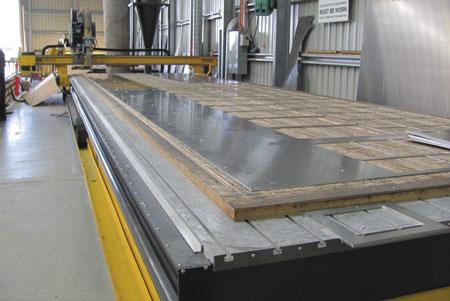| THERE are many components to an effective CNC machining process for fabrication shops. While a high-quality CNC machine is an important factor for the efficient machining of quality products, a good automatic tool pathing software package is equally as important and sets you apart from the competition by improving your product quality and value. No matter how sophisticated a CNC machine is, it can’t do anything without a tool and a tool path. Advanced Robotic Technology (ART) believes that sometimes full productivity gains have not been made by the latest CNC machine technology because of the inherent shortcomings in the off-line generation of tool paths. “The tool path has always been the weak link in the chain,” says David White, director and co-founder of ART, Brisbane. “A high-quality cutting tool, driven by innovative tool path programs can increase productivity by as much as three times.” ART works with different software companies to match the correct tool path software to the production needs of each customer. Among these is the in-house developed multi-purpose ART ToolShop software, CAMduct/PM2000 for plasma cutters and large format routers in aluminium (including automatic patterns for ducting applications as an option), as well as ProNest for plasma cutters and EnRoute for advanced 2D and 3D CNC routing applications. EnRoute is able to take most CAD files and rapidly process them into NC files suitable for use on ART CNC machines. Specialised modules are available for 3D modelling, cabinetmaking, engraving, advanced nesting and most types of machining processes. “With the use of EnRoute Software for router applications, we discovered that it not only streamlines the CAD/CAM production cycle, it also takes on a whole new aspect of affordability, accuracy and uncompromising technical support allowing for maximum productivity,” says White. Automatic tool pathing |
How parts are positioned on the material plate is another important factor for increased efficiency in CNC machining. Parts positioning impacts both the amount of material that the job will consume and the machining time required to cut the parts. A shop’s profit margin is directly connected to part nesting. That’s why it is important for CAD/CAM software to have a complete set of nesting algorithms that can find the optimum geometrical arrangement to simultaneously minimise material waste and maximise cutting times.
Contact: sales@advancedrobotic.com |
Optimum tool path strategies save time
General
Tuesday, 01 March 2011






